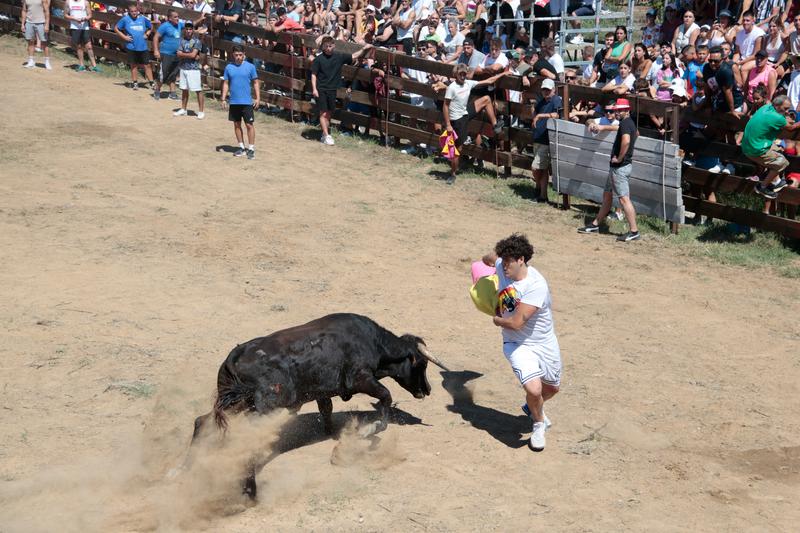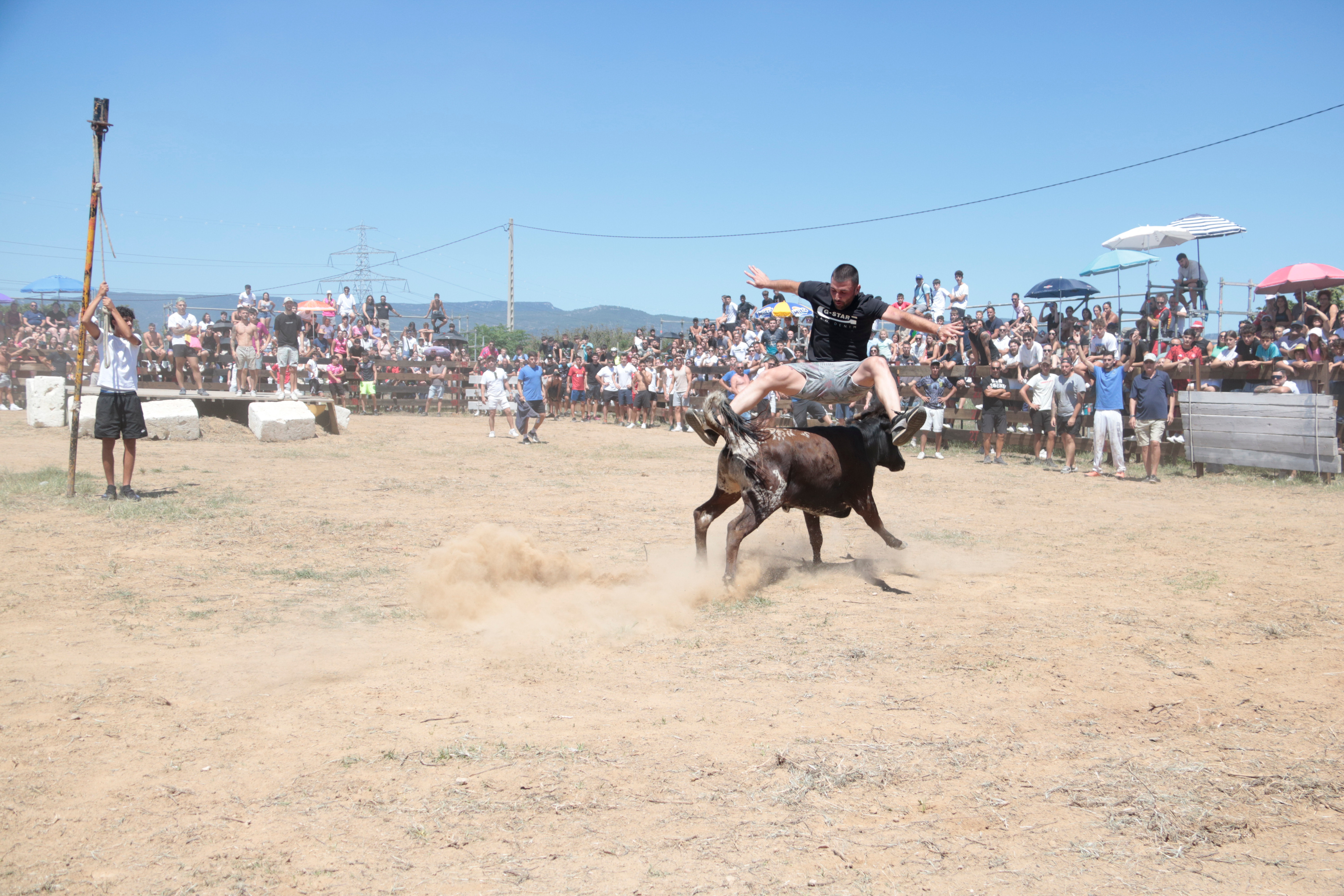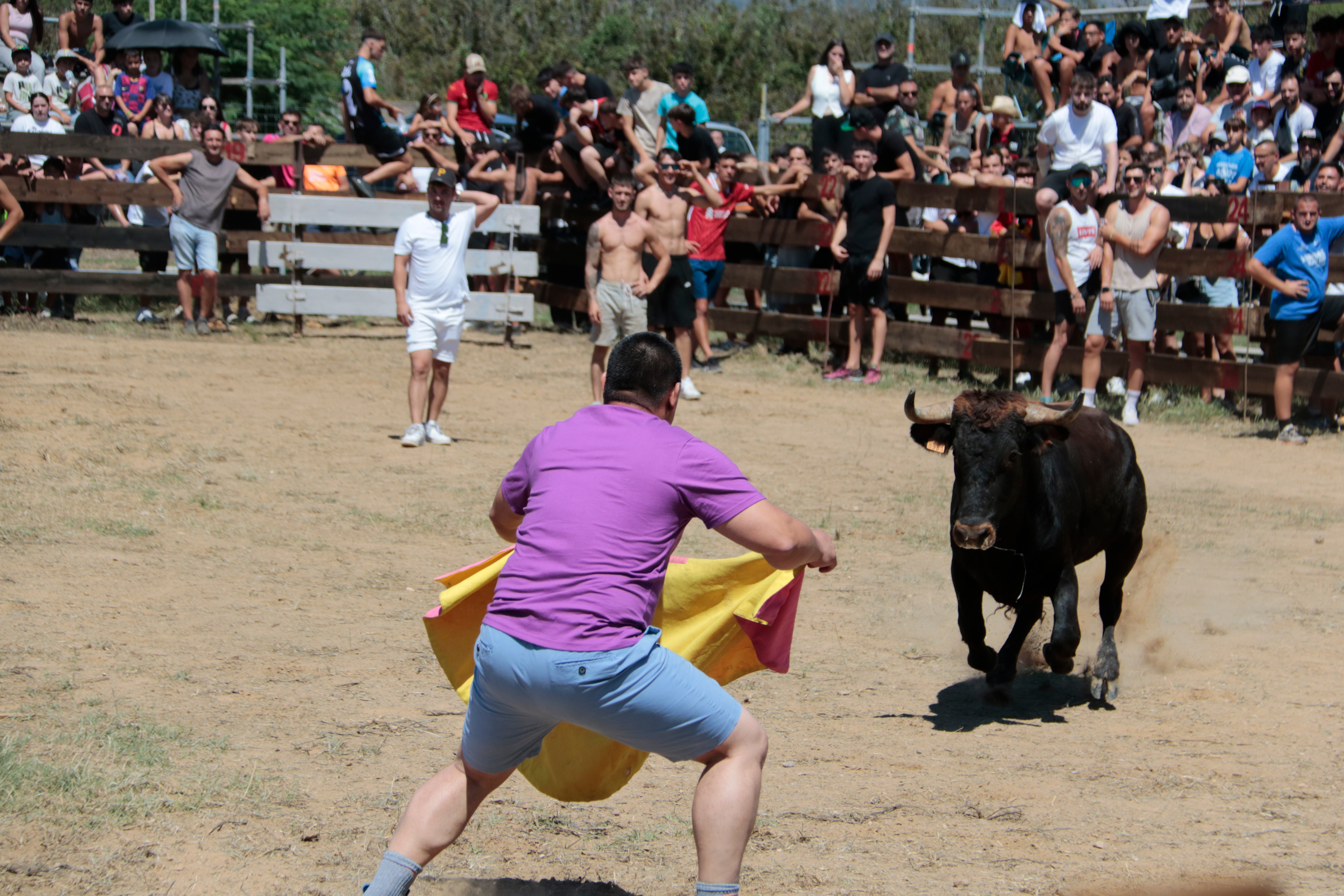Catalonia's last bull-related events stir debate amid animal welfare concerns
Organizers insist animals are treated "very well," while animal rights groups argue that even the law recognizes such events amount to abuse

No bullfights have been held in Catalonia since 2011 but related events involving bulls and cows remain common, especially in the south.
The Terres de l'Ebre region is known as a stronghold for correbous – bull runs where the animals are not killed.
And just to the north, two municipalities in Camp de Tarragona – El Morell and Miami Platja – host temptes de vaquetes, events involving young cows.

Five temptes de vaquetes were staged by the El Morell Bullfighting Club during the town's annual festa major celebrations over the last few days.
A significant crowd gathered to watch the events, held in a closed arena. Children were allowed to watch from the stands – if accompanied by an adult – but access to the arena floor was restricted to over-16s.
The shows are opposed by animal rights organisations such as AnimaNaturalis, who deem them animal abuse, while organisers argue they adhere to established legal protocols.
Shame
"Some people think that, in Catalonia, bull-related events no longer happen, but they do," Aïda Gascón, director of AnimaNaturalis in Spain, told the Catalan News Agency (ACN).
In fact, according to Gascón, there are "450 shows every year, all of them paid for with public money."

Specifically in El Morell, she explains, they use "very small calves, so young that their horns aren't even properly developed, and this increases the abuse and mockery of the animals."
"It's very sad that we don't have another way to entertain ourselves," Gascón says, while pointing out that most municipalities in Catalonia have moved away from bull-related events.
Animals 'treated very well'
Organizers maintain that the animals are treated "very well." A vet checks the animal before it enters the ring.
"At most, the animal is in there for 12 to 15 minutes," says Jordi Leal, from the El Morell Bullfighting Club.

"We provide shade so it doesn't suffer. Inside the ring, the calf isn't touched, or hit. No one throws stones at it. "Anyone who harms the animal is immediately thrown out," he adds.
"There is always criticism," Lead admits, "but we handle it well."
Local referendum
Bullfighting is technically legal in Catalonia. Although the Catalan Parliament outlawed the practice in 2010, the ban was overturned by Spain's Constitutional Court in 2016.
In practice, opposition from the public and the Catalan government have ensured that bullfighting has not returned despite the ruling.
Catalonia's own law on bull-related events, actually considers events such as the temptes de vaquetes to be animal abuse, according to AnimaNaturalis, "but an exception is made because it's a tradition," Gascón explains.
Opposition parties in El Morell have called for a referendum in the town on the issue. If one is held, the local council has pledged that the outcome would be binding.
At this point, no formal citizens' group has emerged to initiate the process.